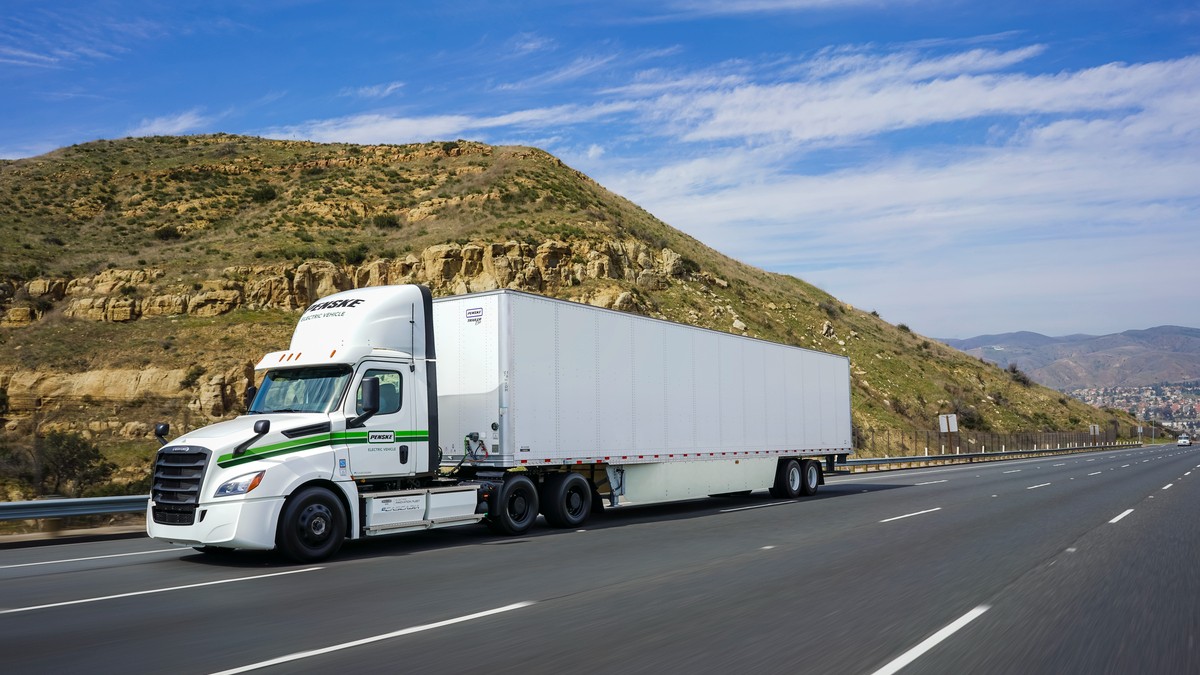EPA finalizes first clean trucks rule in 21 years, but it could be better

The EPA has finalized a long-awaited update to their truck emissions rules, the first update to US truck clean air standards since 2001, though environmental groups say the EPA could do better.
The post EPA finalizes first clean trucks rule in 21 years, but it could be better appeared first on Electrek.
The EPA has finalized a long-awaited update to their truck emissions rules, the first update to US truck clean air standards since 2001, though environmental groups say the EPA could do better.
The new rule starts in model year 2027 and is up to 80% stronger than the current standard. It will reduce smog-forming nitrogen oxide (NOx) emissions from trucks by almost half by 2045.
NOx is one of the primary components of smog, and is emitted by the combustion of gasoline and diesel. Diesel engines tend to produce much more NOx than gasoline engines, so heavy diesel trucks have significant NOx impacts. About 16-18% of NOx emissions come from heavy-duty trucks (though in some states it’s higher, like in California at 32%), despite them accounting for a smaller percentage of total road traffic.
So, regulating the relatively smaller amount of trucks can have outsize influence on overall NOx emissions.
The EPA claims this new regulation will result in several benefits by 2045:
- Up to 2,900 fewer premature deaths
- 6,700 fewer hospital admissions and emergency department visits
- 18,000 fewer cases of childhood asthma
- 3.1 million fewer cases of asthma symptoms and allergic rhinitis symptoms
- 78,000 fewer lost days of work
- 1.1 million fewer lost school days for children
- $29 billion in annual net benefits
The regulations will also “increase useful life of governed vehicles by 1.5–2.5 times, and will yield emissions warranties that are 2.8–4.5 times longer,” according to the EPA.
But not everyone is happy with the new rule. While it’s a big step forward for diesel truck emissions regulation, environmental groups had hoped the rule would focus more on zero-emissions trucks, rather than merely making cleaner versions of dirty diesels.
The Natural Resources Defense Council hailed the EPA for finally updating these rules after 20 years of inaction, but claimed that “these standards fall short, and the agency missed a critical opportunity to slash soot and smog and accelerate the shift to the cleanest vehicles” – by which it means fully-electric trucks. And the American Lung Association praised the rule, looking forward to the EPA’s plans to issue more rules on cleaner trucks starting next year.
On the other side, the Diesel Technology Forum, an industry group in favor of expanded diesel trucking, seemed quite happy with the new rule. They claim this will help accelerate the turnover of old diesel trucks to newer, more efficient models – and think that electric trucks are not the ideal solution for trucking.
Thankfully, this isn’t the end, as far as the EPA goes. The EPA plans to release further rules for greenhouse gas emissions in heavy-duty vehicles starting spring of 2023, and these rules will also go into effect in 2027. Today’s rule change focused on NOx emissions, but CO2 is another important emission to regulate in order to fight climate change.
Transportation is the largest source of emissions in the US. Medium- and heavy-duty trucks combined are responsible for 26% of US transportation CO2 emissions. Light-duty vehicles are responsible for more – 57%, a majority of transport emissions – but there are a lot more of them than there are trucks.
The world is currently well above pre-industrial CO2 levels. Any carbon-positive technology, such as diesel, can only make CO2 levels go up when they need to be going down. The first step toward getting back to ~350ppm CO2 from our current measure of 416ppm (and rising) is to move to zero-carbon technology in every sector, particularly the most-polluting ones like transportation. Putting more new diesel engines on the road just ensures that they will continue polluting for decades into the future, and which will eventually need to be replaced by zero-emission trucks anyway.
The EPA had planned to issue truck CO2 rules this year, but due to new incentives for zero-emission vehicles in the Inflation Reduction Act, they pushed back their decision until this coming spring. With up to $40,000 available for commercial zero-emission vehicles and several new electric trucks just recently coming to market, the EPA seems confident that it can issue stricter CO2 rules than previously planned.
FTC: We use income earning auto affiliate links. More.



